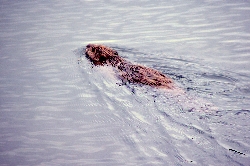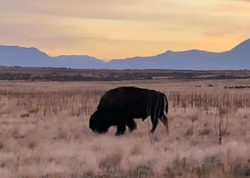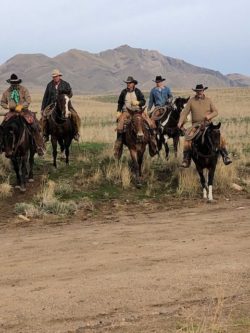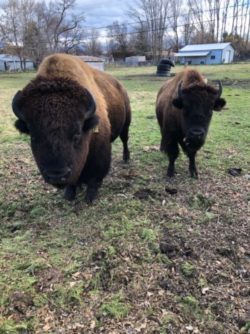
Courtesy & © Mary Heers, Photographer
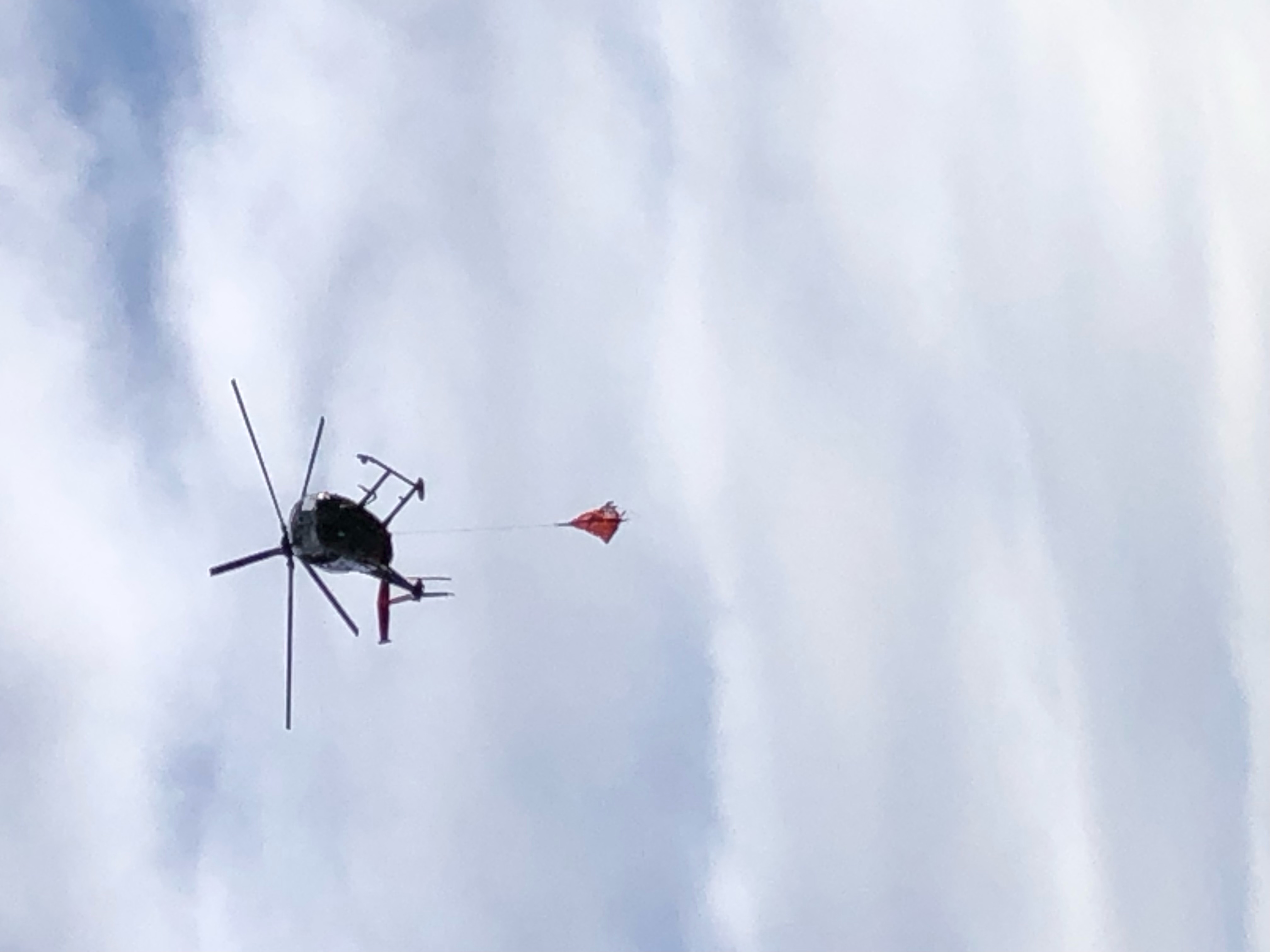 Mule Deer Incoming
Mule Deer Incoming
Courtesy & © Mary Heers, Photographer
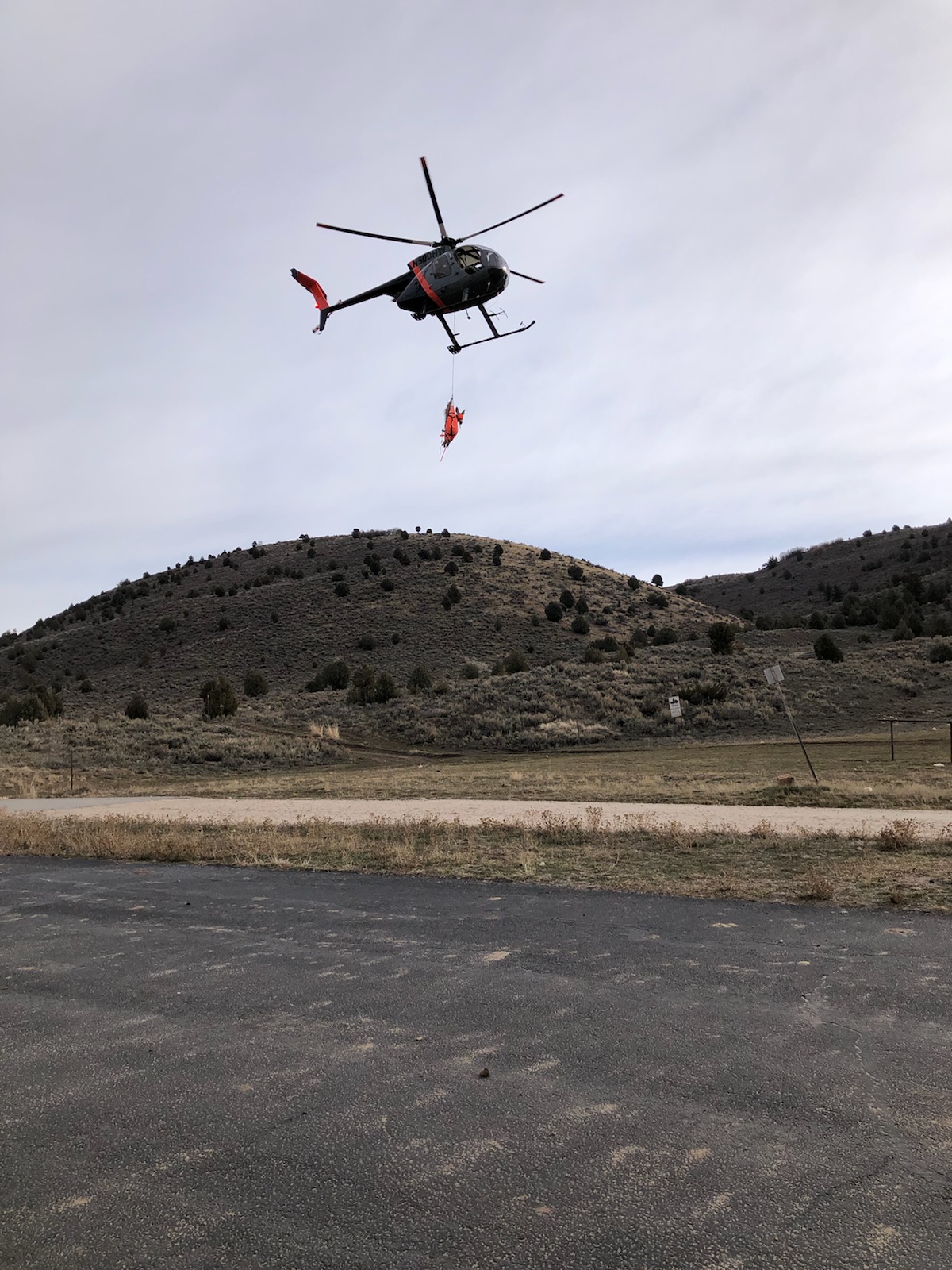 Mule Deer Incoming
Mule Deer Incoming
Courtesy & © Mary Heers, Photographer
 Helicopter Carrying Mule Deer
Helicopter Carrying Mule Deer
Courtesy & © Mary Heers, Photographer
 Mule Deer Health Check
Mule Deer Health Check
Courtesy & © Mary Heers, PhotographerFor the mule deer at Hardware Ranch, last Nov 30 was anything but ho-hum.
In the early morning light, the Division of Wildlife Resources was gathering in the parking lot at the Ranch. The plan for the day was to capture eight mule deer for a quick medical checkup on the overall health of the herd.
For this, they needed the help of come helicopter cowboys.
Right on cue, we heard the thunk, thunk, thunk of an incoming helicopter. A team of three men hopped out. After a quick parley, they were off
A bit like calf ropers at a rodeo, the helicopter cowboys would stop a running deer in its tracks by shooting a tangle net over it. Hopping off the helicopter, one cowboy (also known as “the mugger”) would wrestle the deer onto its side and tie its feet together. The mugger then slid the deer onto a sling, and to keep it calm, kindly secured a cover over its eyes.
The helicopter then lifted the sling, flew the deer through the air, and set it down gently in front of the waiting crew at the ranch.
The crew sprang into action. Four men raced over to the deer, slid it onto a rope stretcher, and carried it to a hanging scale.
“76 pounds’” the researcher called out. A graduate student with a clipboard wrote it down.
Next stop: a white folding table. The crew surrounded the deer, brandishing some familiar tools. They took the deer’s temperature, a blood sample, a hair sample. One man whipped out a yellow measuring tape that looked exactly like the one in my grandmother’s sewing basket.
Then they looked into the deer’s mouth.
“Three years,” the researcher said with absolute certainty.
“How did you know that?” I couldn’t help asking.
“Easy,” he said. But he admitted that after five years, you can only be sure of a deer’s age if you look at the tooth under a microscope and count the rings, just like counting rings on a tree.
Then I spotted something I’d never seen before- a black box that measured the depth of fat on the deer’s rump A very well fed deer will head into winter with 1 inch (25 mm) of fat reserves. A deer with less that 9mm will probably not make it through a hard winter. This herd was coming off a very dry summer, a genuine cause for worry. But today it was all good news. The fall rains had greened up the hillsides in time for the deer to plump up.
And then it was done. The deer was carried to the perimeter of the parking lot and released. As it bounced up the hillside to rejoin the herd, I was reminded of the time when I was coming down the slopes off the Wellsville ridgeline, and had sat down to rest. Suddenly three does poked their heads through the dense undergrowth. We took a long curious look at each other.
I remember thinking how beautiful they were, with their long, elegant ears. But they also looked vulnerable. Coyotes, cougars and cars will continue to take a heavy toll on mule deer. New challenges will crop up. But this day last November, it was all good news for the health of the herd at Hardware Ranch. And all cheers for the Division of Wildlife Resources for a job well done.
This is Mary Heers and I’m Wild About Utah.
Credits:
Photos: Courtesy & Copyright © Mary Heers
Featured Audio: Courtesy & Copyright © Friend Weller, Utah Public Radio upr.org
Text: Mary Heers, https://cca.usu.edu/files/awards/art-and-mary-heers-citation.pdf
Additional Reading: Lyle Bingham, https://bridgerlandaudubon.org/
Additional Reading
Wild About Utah, Mary Heers’ Wild About Utah Postings
Why the DWR captures deer, other big game animals with helicopters each winter, Utah Division of Wildlife Resources, State of Utah, February 21, 2020, https://wildlife.utah.gov/news/utah-wildlife-news/864-why-dwr-captures-deer-big-game-animals-helicopters.html
Episode 8: Flying deer, Wild Podcast, Utah Division of Wildlife Resources, State of Utah, May 19, 2020, https://wildlife.utah.gov/wild-podcast/927-flying-deer.html
Mule Deer, Utah Species, Utah Division of Wildlife Resources, Department of Natural Resources, State of Utah, https://fieldguide.wildlife.utah.gov/?species=odocoileus%20hemionus
Boal, Jed, DWR Uses Helicopter To Catch Deer For Tracking Program, KSL TV, November 18, 2019, https://www.ksl.com/article/46676706/dwr-uses-helicopter-to-catch-deer-for-tracking-program
DWR transports mule deer by helicopter [To Antelope Island], KSTU Fox 13 Utah, Nov 22, 2019, https://youtu.be/D8rhMCuexz8

